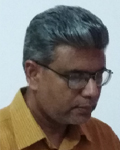Till Sun and Moon Shines [Part 10]
By Eng. (Dr.) Chandana JayawardanaSalinity Effects
A major concern with irrigated water is decreased crop yields and land degradation due to excess salts being present. As the water flow in small tank cascades passes several zones before reaching the croplands, there is a high possibility of developing water salinity. The land strip adjacent to the bund of small tanks is called kattakaduwa, functioning as a salt trapping zone. Kattakaduwa is consisting of range of plants with high rate of salt tolerance like luwarana, kumbuk, karanda, siyambala, divul, vetakeya, and dunukeya), etc. Citing to Burken and Schnoor et. al, Melvani et. al., note when suitable plants are grown in a contaminated substrate, the root system will function as a highly dispersed, fibrous uptake system to form underground networks of solar-driven pumps. These will extract and concentrated elements and compounds from soil and water and either (1) stored in the roots, stems or leaves, (2) changed into other types of chemicals within the plant or (3) changed into gases that are released into the air as the plant transpires.
Melvani et. al describing the results of the bioremediation measures adopted in removing contaminants around wells in Kalpitiya peninsula, concludes planting of species like Kumbuk (Terminalia arjuna), Mee (Madhuca longifolia), Palu (Manilkara hexandra), Thimbiri (Diospyros malabarica), Halmilla (Berrya cordifolia), Wetakeiiya (Pandanus kaiida), Karanda (Pongamia pinnata), Surya (Thespepsea populnea) and Murunga (Moringa oleifera) has contributed to the reduction of the contamination in the wells. The hydrological importance of kattakaduwa could be ascertained in the light of above observations. Vegetation covering the kattakaduwa would act as an absorber of contaminants in seepage water through the tank bund, blocking the spread to downstream croplands.
Siltation and salinity are basically consequences of material transfer from one zone in the micro catchment to another zone. In siltation, sediments are transferred from catchment to tank bed, while in salinity, soluble minerals are transferred from catchment to fields via tank bed. The linear operation of these material transfers for a long period and for a long range will make the system unsustainable, which could only be prevented by proper reversal processes of cropland, tank bed and catchment management techniques. While minimizing the materials transfer from catchment to tank bed, what ever the quantity thus transformed is returned back to its natural locality. Timely de-siltation and maintenance of gasgommana, perahana, iswetiya or potawetiya and kattakaduwa are measures incorporated to introduce the cyclicity of material flow in this process, thus natural locality is maintained. This localized material cyclicity maintains the catchment - tank – cropland interaction sustainability, ensuring the tank bed geometry and tank functionality unaffected.
The recent practice of de-siltation by mass scale sand extraction from the tank bed and removing the cleaned sand to construction industry is a total contrast of above sustainable cyclical practices. This is merely the extension of linearity of sediment transfer from catchment to tank bed to another remote point, the construction site. The material removed from catchment due to surface runoff will never be returned to the same locality and cyclicity as discussed above will be grossly violated.
References
Burken, J.B., Schnoor, J.L., Phytoremediation: Plant Uptake of Atrszine and Role of Root Exudates, Journal of Environmental Engineering, Vol. 122, No. 11, November 1996, pp. 958-963.
Melvani, K., Chandrasekera, K., Mudannayake, R., The Role of Trees in the Bioremediation of Drinking Water – A Research experiment in Nawakkaduwa, Kalpitiya, 32nd WEDC International Conference, Colombo, Sri Lanka, 2006,
 Eng. Chandana Jayawardana has earned his first degree in Electrical Engineering from University of Moratuwa and then, post graduate qualifications in Industrial Engineering and Buddhist Studies. He is currently working as Design Manager, Balfour Beatty Ceylon (Pvt) Ltd, Katunayake.
Eng. Chandana Jayawardana has earned his first degree in Electrical Engineering from University of Moratuwa and then, post graduate qualifications in Industrial Engineering and Buddhist Studies. He is currently working as Design Manager, Balfour Beatty Ceylon (Pvt) Ltd, Katunayake.





